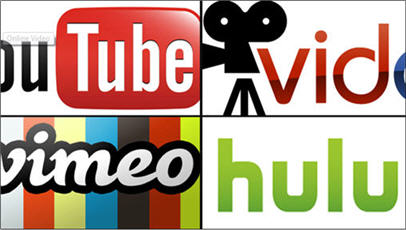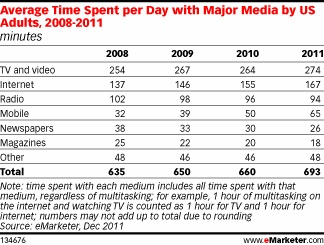Like others, the use of video is on my mind.

Many are saying online video will take center stage in 2012.
Online video is already proving to be a powerful way to reach and influence people.
Savvy Christian communicators recognize it as a way to connect with people’s hearts and minds.
However, I think there are some inaccurate assumptions about streaming media that could slow the adoption of valuable video platforms by religious broadcasters.
Here are eight myths and misconceptions about online video that will hopefully shed a little light on its huge potential.
1. Radio doesn’t do video
In the digital revolution, defining what you do by delivery mechanism (radio, TV, books) will be limiting. Digital technology has created an environment for incorporating a range of delivery media (audio, video, data), to reach everyone, every way. The next generation of broadcasting will increasingly give audiences more choice, including the addition of video delivered over a variety of distribution mechanisms.
2. There’s not enough content
The list of online churches with an Internet Campus or video webcast continues to grow. Church communications experts are directing leaders toward the use of streaming media platforms. Traditional media ministries and creative content producers are combining forces to launch online video initiatives. With thousands of publishers producing quality video content, there are plenty of opportunities for creating dozens of streaming media channels in multiple languages.
3. The public isn’t embracing streaming media
Millions of consumers are getting high quality video over the internet using free or low priced OTT services (Netflix, Hulu, Apple). Cable companies have joined the bandwagon with “TV Everywhere.” Telecom companies have launched IPTV services. “Virtual cable companies (Google, Apple, Amazon), among others will soon deliver linear TV (like ESPN) for the first time in select markets. Public acceptance of streaming media will continue to transform traditional broadcasting at an accelerating pace.
By 2015 online video (TV, VOD, Internet and P2P) will account for 90 percent of all global consumer IP traffic. (Cisco Visual Networking Index)
4. The discovery process is too much work
Christian radio stations are known for driving traffic to the programming content of ministry partners. Distributing and promoting online video is simply an extension of that strategy. It’s like having your own TV channel, without any radio-TV cross-ownership rules. Radio’s already captive audience gives it the capability to launch new streaming media content and develop loyal audiences for it. That’s an advantage over just about everybody out there.
5. Long-form video programming is declining
MTV moved away from showing music videos to series programming because music videos, get a rating of 0.5 percent and have a hard time retaining viewers. Long-form programming means that viewers stay with the channel for at least 30 minutes, which helps increase ratings. (Betsy Frank, Exec VP Research MTV)
6. Video distribution places you at the mercy of a few CDN’s
According to Informa Research, more than 41 Telco Carriers are reported to be in some phase of CDN deployment. The concept of federated CDNs is becoming a reality. In June of 2011, StreamingMedia.com’s Dan Rayburn broke the news that a group of telcos had founded an Operator Carrier Exchange (OCX) to formalize the process of interconnecting their content delivery networks.
7. Video advertising is not proven yet
Video advertising is now considered by marketers a premium way to influence customers, and the rates being paid to place video spots on mass-appeal and valuable niche websites are approaching, sometimes exceeding, rates for the traditional television platform. ROI is more trackable online than on traditional media, putting the focus on real meaningful measurement of audience engagement.
eMarketer estimates that US online video ad spending will grow by a compound annual rate of 38% in a five-year span ending in 2015, making this by far the fastest-rising category of online spending.
8. Conventional radio will always do well
 Radio is holding its own, but 2011 was not kind. New services and content delivered via the Internet is drawing listeners and viewers. (eMarketer study)
Radio is holding its own, but 2011 was not kind. New services and content delivered via the Internet is drawing listeners and viewers. (eMarketer study)
The question is…
With barriers to entry falling in the delivery of media, what content is the next generation of Christian broadcasting to deliver, and how can this content be tailored so that the audience continues to want us to be in their lives?
Steve Lyon, Editor-in-Chief of Moody Publishers, says we should work hard to stay on top of the opportunities technology affords us to prepare, platform, and deliver our content because it gives those we reach the greatest possible chance to connect with the Word in ways that make them more like Christ.